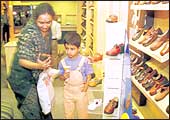 |
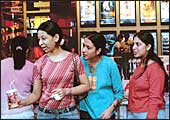 |
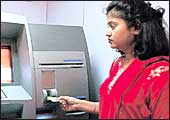 |
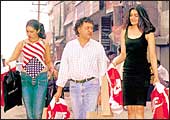 |
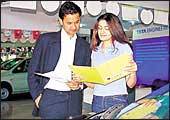 |
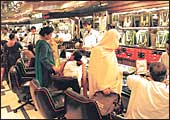 |
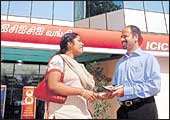 |
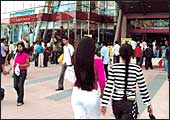 |
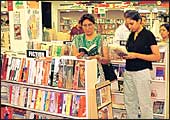 |
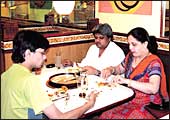 |
| Consumption paradise: From
shoes for kids to a second car, home loans to eating out, trips
to the ATM to indulging that impulse or just hanging around
burning some money at malls, Indians are doing more of everything.
No one is complaining |
We
are not a billion hungry, starving people anymore," says Captain
G.R. Gopinath. He pauses for effect, smiles to let you know that
the punchline is coming, and delivers it with the smugness that's
only natural in a man who launched India's first discount airline
Air Deccan (he is its Managing Director) 17 months back and proved
cynics wrong with a business model that, well, flies. "We are
a billion hungry consumers."
That original quote brings us to the original
question: Is it boom-time? Or, actually, what characterises a consumption
boom? Is it when factories start running out of capacities, companies
scramble to expand, and jobs are aplenty? Is it when consumer sentiment,
already high, looks set to go higher? Is it when markets, across
geographies and product categories, stop worrying about what the
government is doing to make lives better, and grow, and grow? Or
is it when marketers, always quick to congratulate themselves for
excellent marketing strategies, admit in a rare moment of truth
(brought about by happiness) that sales will continue to grow even
should they stop all promotional activity?
This writer is saved the trouble of picking
from the alternatives: everything, you see, is happening all at
once (see Indians Are Buying More...). It's the season of plenty
in all consumer markets in India, and everyone is invited to the
party. "Sales have risen this year, despite no help from the
government in terms of reducing the excise duty," says B.V.R.
Subbu, President, Hyundai Motor India, with the fact that car sales
crossed the million-units-a-year mark for the first time in 2004
backing up his statement. An obviously buoyant Motown has lined
up a car launch every 10 days in 2005. "The mood is more upbeat,"
adds Raghu Pillai, President (Retail), RPG Group. "At some
level, supply is creating its own demand."
With 50 malls up, and another 250 set to mushroom
across the country over the next three years, the organised Rs 28,000-crore
retail industry is growing at a scorching pace of 25 per cent and
more; by 2008, this, reckon experts, will be a Rs 1,00,000-crore
industry. Yet, high-street sales have not suffered, with Delhi's
Connaught Place, Mumbai's Linking Road and Bangalore's Brigade Road
thronging with shoppers, and not just those of the window variety.
"I would say that the strong underlying buoyancy in the consumer
market is lifting sales for everyone," admits Ajay Kaul, CEO,
Domino's India.
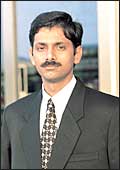 |
"Over the last five years, 20
million households have been added to the upper middle class"
V. Vaidyanathan
Senior GM and Country Head (Retail Banking)/
ICICI Bank |
Should you care to listen (shopping, after all,
is a time-consuming activity), marketers will tell you that the
growth, for the first time ever, is secular, across regions and
across cities of all sizes. "What's remarkable is that virtually
every state has come to the party," says Atul Sobti, Executive
Director, Hero Honda. "Right now, we cannot make enough motorcycles
to meet demand." This, when the company sells 230,000 motorcycles
every month. This time, goes the consensus, the growth is real.
An Ideal Recipe For Growth
First, this boom is not hype-led, for marketing
activities are merely following the boom, not causing it. "Over
the past year, marketers have slowly realised that it is time to
invest in the brand, once again, beyond promotional advertising,"
says L.V. Krishnan, Chief Executive of tam, a media monitoring company.
Cautious marketers have first read the signs of growth in the market,
and only then decided to invest either in upping capacity or in
communicating more aggressively with consumers.
They didn't start the fire, but they sure are
fuelling it now. Everyone, from Hero Honda to Hyundai to LG to Samsung
to even companies in the until-now-growth-anaemic Rs 48,000-crore
fast moving consumer goods industry such as Hindustan Lever and
Britannia, is engaged in capacity-expanding exercises. The past
year has seen an average increase in the length of commercials from
21 seconds to 23 seconds, across channels and across categories
(given that media rates are always on the up, that's a big deal).
And as many as 33 new television channels were launched last year,
in genres as varied as news, kids, lifestyle, reality, nature and
history. Why, even the expansion-shy print media saw action, with
newspaper groups reaching out and launching or planning editions
that will make them truly national in reach.
 |
"We are not a billion hungry,
starving people anymore. We are a billion hungry consumers"
Captain G.R. Gopinath
Managing Director/Air Deccan |
Second, this boom has slowly crept up on us,
and has been built brick-by-brick, not landed like manna from the
heavens. "We as a country never had a prosperity plan but now,
by sheer momentum of synchronous individual bits of action, we find
ourselves in the middle of one," says Santosh Desai, President,
McCann Erickson. Irrational exuberance, this isn't. "I have
never felt this upbeat in the last 22 years I have worked in this
country," says Nitin Gupta, Country Manager, MasterCard. And
even marketers in categories that are, well, not-so-hot, are looking
happier.
Consider the Rs 20,000-crore market for televisions,
washing machines, refrigerators and air conditioners, which grew
at about 6 per cent in 2004 and saw price erosion across categories.
"There is a new wave of change and everything is moving well,"
says Ravinder Zutshi, Director Sales, Samsung India. Growth in this
category is, at this point in time, characterised by islands of
opulence such as the markets for frost-free refrigerators, flat-
and plasma-screen televisions, fully-automatic washing machines
and the like, but marketers like Samsung expect the rest of the
market to do well soon. "An EMI-led sales pitch, which most
durable marketers have caught on to, will be a major trigger for
growth now on," say Soumitra Ghatak, Head, Sales & Marketing,
Godrej Appliances. "Today Barista as a brand is growing organically,
and that says a lot," says Brotin Banerjee, Chief Operating
Officer, Barista Coffee Company, a 120-store chain. That says a
lot, not just about the fortunes of the otherwise troubled pioneer
of the coffee café culture in India, but also on the state
of the consumer market in the country. At Barista, walk-ins are
up 20 per cent, and spends, by anything between seven and 10 per
cent. Almost everyone else in the services business, hotels, restaurants
and airlines, speaks of organic growth too, at rates exceeding 20
per cent. "Even one-two years ago spending Rs 30 on a cup of
coffee was a no-no. Today, Barista is not considered expensive,"
adds Banerjee. Everything is within the Indian consumer's grasp
now.
The Basis Of It All
With India's top 2,046 companies, cutting across
sectors, adding over 74,075 new jobs in just three months, January
to March 2005, according to a survey by Ma Foi, a Chennai-based
staffing major, things are looking good on the jobs front as well.
Employee stock options are back in fashion as talent retention becomes
imperative in the face of a virtual business explosion. "The
atmosphere at most companies is changing. Offices are becoming more
relaxed and employers have also started giving softer perks like
funding children's education abroad and paid holidays," says
Mohit Mohan, Vice President, Gilbert Tweed, a headhunting firm.
Suddenly, the organisation seems to have become a friendlier face,
with some even while throwing those gentle, no-poaching agreements
between rival firms into the bin. "Employees come to us from
anywhere; we believe in an individual's right to choice and livelihood,"
says the communication head of a Mumbai-based major business process
outsourcing (BPO) firm. "I see the IT sector driving consumer
confidence," adds Jerry Rao, Chairman and CEO, Mphasis. "Banks,
for example, are giving out consumer loans more freely; the growth
of it means benefits are also percolating to smaller cities."
The man is right. The 40 per cent growth in the Rs 1,40,000-crore
consumer loan market for anything (from homes to audio systems)
comes largely from the new consumer. "Over the last five years,
20 million households have been added to the upper middle class,
and they have been partly responsible for this growth," says
V. Vaidyanathan, Senior gm and Country Head, Retail banking, ICICI
Bank. For instance, almost 60 per cent of the Rs 60,000-crore home
loan market lies outside India's top 10 cities.
"Our growth has been fuelled by the middle
class and we have gone about our business like a mass marketer with
our average consumer spend at a mere Rs 20-25," says Vikram
Bakshi, Managing Director, McDonald's India. In burger-speak, middle-class
means anyone with a monthly income in excess of Rs 2,000. According
to National Council of Applied Economic Research (NCAER), there
are already over 50 million urban Indian households that fall into
that category. In January 2005, McDonald's 67 outlets in the country
sold 1.6 million burgers, 20 per cent over what it had done a year
ago (which was a 40 per cent increase over the previous year). And
that is just 1 per cent of the potential market. If things go well,
imagine what awaits us...
-additional reporting by Kushan
Mitra, Rahul Sachitanand, Amanpreet Singh,
Supriya Shrinate, and Priyanka Sangani
|















